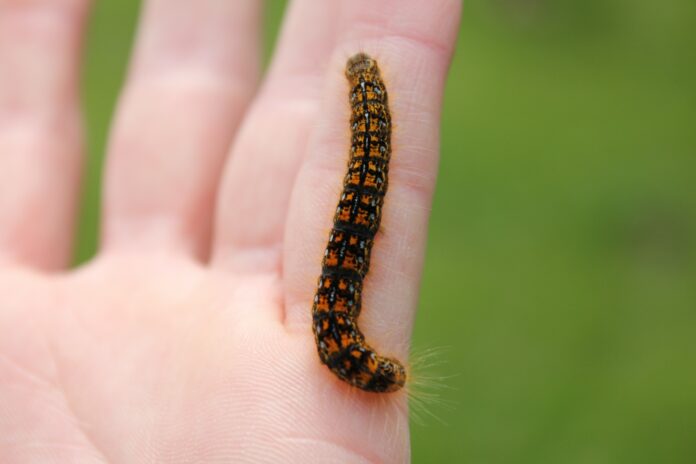They can be found on the street, in the trees, tangled in your hair, and practically everywhere else you could imagine!
Anyone who has been outside in the last few weeks will no doubt have seen one or 100 western tent caterpillars. The species is native to Vancouver Island, southern Canada and the western United States, but this year has been heavier than most in terms of their population.
Many thought these caterpillars might be the larval form of the notorious spongy moths for which population control measures have recently been taken in the Capital Regional District, but they are completely unrelated to one another aside from them both being young moths.
The western tent caterpillar is the larval form of moth that matures in late summer. They spend much of their time in silken tents they make for themselves but as most Victorians have seen they like to hang out in trees and grass while still in caterpillar form.
Their lifecycle is annual as the caterpillars hatch in early spring, they mature into moths in late summer and finally, the moths lay eggs which hatch again in spring.
Despite their lifecycle being yearly, every six to 11 years an outbreak will come about.
Victoria Buzz reached out to Dr. Cara Gibson, Executive Director of the Swan Lake Christmas Hill Nature Sanctuary (SLCHNS) in Saanich to find out more about the western tent caterpillar and how they interact with our local environment.
Dr. Gibson says there’s no need to fret about the state of your garden — the fuzzy friends aren’t harmful to most healthy vegetation; however, the western tent caterpillar can contribute to the defoliation of trees, which in some cases can be detrimental.
“Healthy vegetation should be fine. If a tree is stressed or it’s fruit-bearing, it’s best to remove the caterpillars,” said Dr. Gibson.
Aspen is a popular tree throughout Greater Victoria and there are many on site at the SLCHNS which Gibson says are the insect’s ideal tree.
“The caterpillars are considered social (gregarious) and feed in large groups as a way to dilute the effects of predation and parasitism,” she told Victoria Buzz.
“The caterpillars generally do not inflict permanent damage to the plants. In fact, the damage they do to the leaves can allow additional sunlight to reach the understory and a greater mix of plant species is able to grow as a result.”
Gibson added that at the SLCHNS, she can hear so many caterpillars munching the leaves overhead in the parking lot that the descending droppings sounds like soft rain.
Entomophobes, or people afraid of insects, may want to see the caterpillars gone from their spaces and their properties but Dr. Gibson says there is no need to fear them and they won’t be around for very long.
Western tent caterpillars don’t bite or sting; however, their hairs can sometimes cause a rash with prolonged skin contact.
Despite all this, their lifespan is all but half-over at this point. From egg to adult takes them about six weeks which Victoria is about three weeks into.



